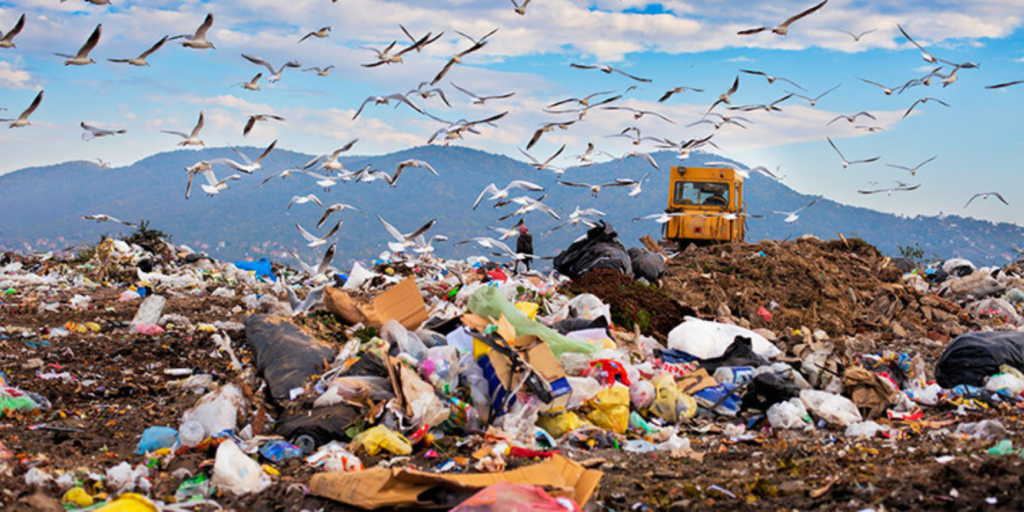Landfills contribute to global warming primarily through the release of greenhouse gases (GHGs), specifically methane (CH4) and carbon dioxide (CO2). Here’s how and to what extent landfills contribute to global warming:
Methane Emissions:
When organic waste, such as food scraps and yard trimmings, decomposes in landfills without oxygen (anaerobic conditions), it produces methane. Methane is a potent GHG, with a much higher warming potential than carbon dioxide over a 20-year period. Landfills are a significant source of methane emissions, accounting for approximately 20% of global methane emissions. Methane can leak from landfills into the atmosphere during waste decomposition and from the venting of landfill gas.
Carbon Dioxide Emissions:
Landfills also contribute to global warming through carbon dioxide emissions. When waste undergoes aerobic decomposition (with oxygen), it generates carbon dioxide. Additionally, when landfilled materials, like plastics and paper, degrade over time, they release carbon dioxide into the atmosphere. While carbon dioxide has a lower warming potential per unit than methane, its overall contribution to global warming is significant due to the vast quantities released by landfills worldwide.
Leachate and Soil Contamination:
Landfills produce leachate, a liquid formed as rainwater percolates through the waste, picking up various contaminants. Leachate can contain harmful chemicals and heavy metals, which can seep into the surrounding soil and groundwater, leading to pollution. This pollution can have indirect environmental impacts, such as affecting ecosystems and disrupting natural processes that help mitigate climate change.
Reducing the environmental impact of landfills and their contribution to global warming requires implementing effective waste management strategies:
a) Waste Reduction and Recycling: By reducing waste generation through recycling, composting, and adopting sustainable consumption practices, less waste ends up in landfills, resulting in reduced methane and carbon dioxide emissions.
b) Landfill Gas Capture: Implementing landfill gas capture systems allows the collection and controlled combustion of methane, converting it into carbon dioxide, which has a lower warming potential. This process reduces methane emissions and can generate energy in the form of electricity or heat.
c) Enhanced Landfill Management: Employing advanced landfill management techniques, such as landfill cover designs that enhance gas capture, proper waste compaction, and regular monitoring, can help minimize methane emissions and environmental contamination.
d) Transition to Alternative Waste Treatment Methods: Exploring alternative waste treatment methods like waste-to-energy facilities, anaerobic digestion, and composting can divert organic waste from landfills, reducing methane emissions and producing renewable energy or compost.
By implementing sustainable waste management practices, we can significantly reduce the greenhouse gas emissions from landfills and mitigate their contribution to global warming while promoting a more circular and environmentally responsible approach to waste management.

